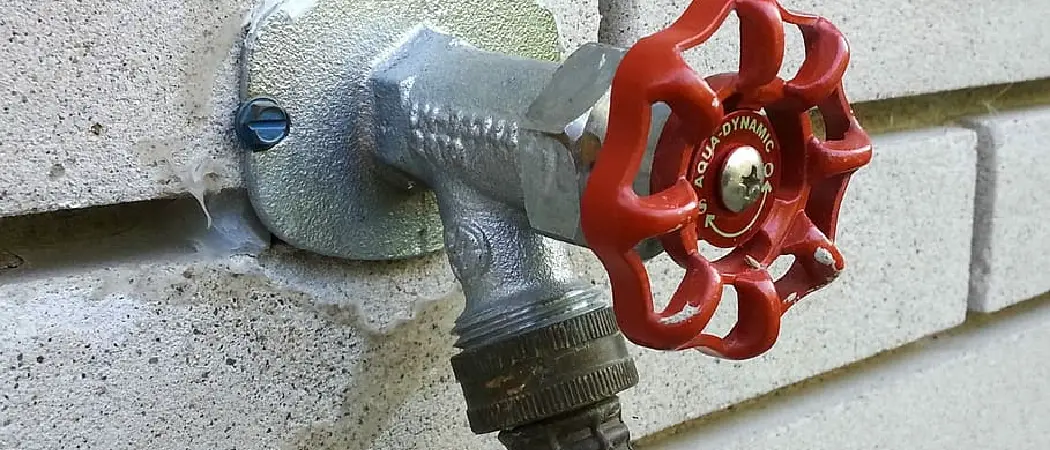Imagine waking up to a geyser erupting from your outdoor faucet after a freezing night! The damage and chaos that can result from a burst pipe is every homeowner’s nightmare. But what if there was a way to prevent this disaster?
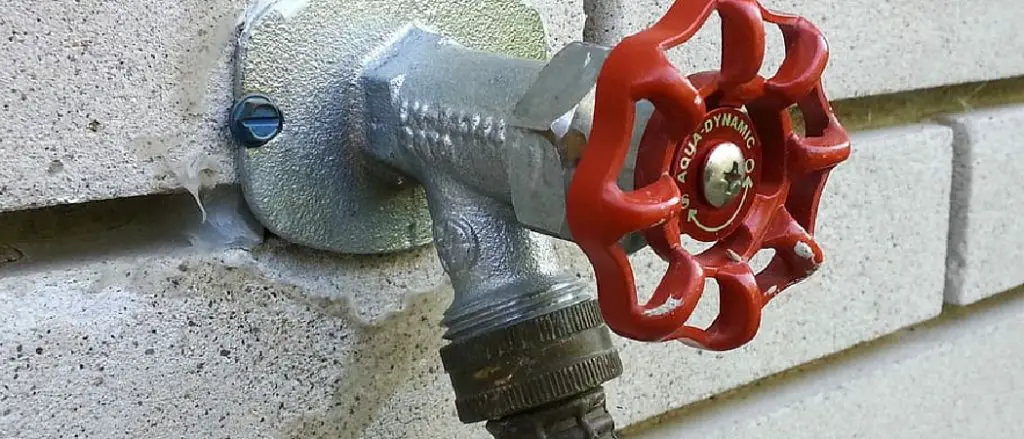
Knowing the type of faucet you have installed can save you from costly repairs and protect your home from water damage. In this blog post, we will be discussing the important topic of frost-free faucets – how they work and their benefits, especially in colder climates.
We will also briefly touch on the different types of frost-free faucets and their identifying features. Let’s dive into the detective work and uncover the truth about how to tell if you have a frost free faucet.
How Frost-Free Faucets Work: Understanding the Mechanics Behind This Type of Faucet
The Basics
Frost-free faucets, also known as freeze-proof or anti-siphon faucets, are designed to prevent water from freezing and bursting the pipe during cold weather. This is achieved through a long stem that extends into the interior of your home, where it is warmer. Unlike traditional faucets which have a valve seat located just behind the faucet handle, frost-free faucets have a valve seat located at the end of the long stem, inside your home. This ensures that no water is left in the exterior portion of the faucet when it is turned off, preventing any potential freezing.
The Anti-Siphon Feature
Apart from preventing freezing, frost-free faucets also come with a crucial anti-siphon feature. This prevents any contaminated water from being sucked back into your clean water supply. If there is a sudden drop in water pressure, such as when the main water supply is shut off, traditional faucets can create a vacuum that draws in dirty water from outside. This risk is eliminated with frost-free faucets as they have an anti-siphon valve that prevents this backflow.
The Benefits of Frost-Free Faucets
Frost-free faucets offer a variety of benefits, making them a popular choice for homeowners. Some of these benefits include:
- Protecting your pipes from freezing and bursting during cold weather.
- Eliminating the risk of contaminated water being sucked back into your clean water supply.
- Extended lifespan due to the valve seat being located inside your home, away from harsh weather conditions.
- Easier to maintain and repair compared to traditional faucets.
How to Tell if You Have a Frost Free Faucet: Identifying a Frost-Free Faucet
Now that we understand how frost-free faucets work and their benefits, it’s time to learn how to tell if you have a frost free faucet. Here are a few key features and characteristics to look for:
Visual Clues
Orientation of the Handle
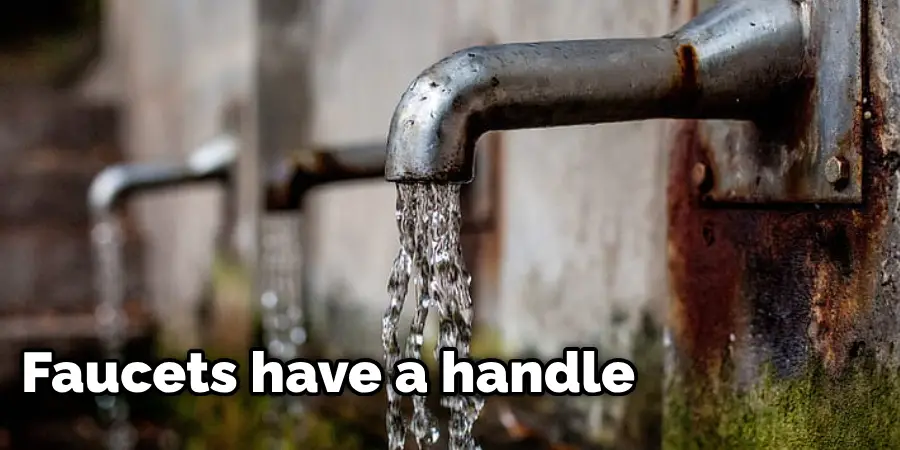
Unlike traditional faucets, frost-free faucets have a handle that is perpendicular to the wall when turned off. This allows for proper draining and prevents any potential freezing.
Length of Stem
Another visual clue is the length of the stem on your faucet. Frost-free faucets typically have a longer stem, extending several inches into your home. Traditional faucets, on the other hand, have a much shorter stem.
Location of the Valve Seat
As mentioned earlier, frost-free faucets have a valve seat located at the end of the long stem inside your home. You can check this by unscrewing the handle and looking for a long stem with a small cap at the end.
Labeling
Some frost-free faucets may also have a label or marking on the handle, indicating that it is an anti-siphon or freeze-proof faucet.
Mechanical Clues
Anti-Siphon Feature
You can test for an anti-siphon feature by shutting off the main water supply and then turning on your faucet. If no water comes out, it means that the anti-siphon valve is working.
Stem Movement
When you turn off a frost-free faucet, the stem will move in and out slightly, sealing off the flow of water. This movement is not present in traditional faucets.
Beyond the Basics: Advanced Faucet Forensics
Temperature Testing
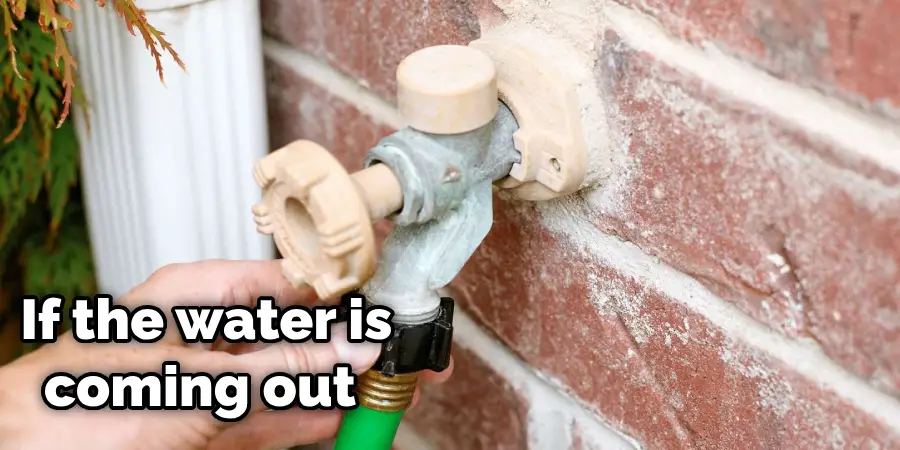
If you’re still unsure whether your faucet is frost-free, you can do a simple temperature test. Place a thermometer on the exterior portion of the faucet and then turn on the water. If the water is coming out at room temperature, it’s likely that you have a frost-free faucet.
Inspecting Other Faucets
By now, you should have a good understanding of what a frost-free faucet looks like and how it functions. You can use this knowledge to inspect other faucets in your home and determine if they are also frost-free. If you find that you don’t have any frost-free faucets, consider upgrading them to prevent potential freezing and bursting.
Why Frost-Free Faucets Are Essential in Colder Climates
Preventing Frozen Pipes
As the name suggests, frost-free faucets are an essential tool for preventing frozen pipes. By keeping water flowing during cold weather, they eliminate the risk of bursting pipes and costly repairs.
Protecting Your Home from Water Damage
In addition to preventing freezing, frost-free faucets also protect your home from water damage by eliminating the risk of backflow and potential leaks.
Saving Money in the Long Run
Investing in frost-free faucets may seem like an added expense, but it can save you money in the long run. By preventing frozen pipes and potential water damage, you avoid costly repairs and replacements.
Tips for Maintaining and Winterizing Your Frost-Free Faucet
Regularly Inspect and Clean Your Faucet
Inspect your frost-free faucet for any debris or mineral buildup that can affect its performance. Use a vinegar solution to clean the faucet and ensure it’s functioning properly.
Shut Off the Water Supply During Winter Months
To prevent freezing, shut off the water supply to your outdoor frost-free faucets during the colder months. This will also prevent any leaks or potential damage.
Drain and Disconnect Hoses
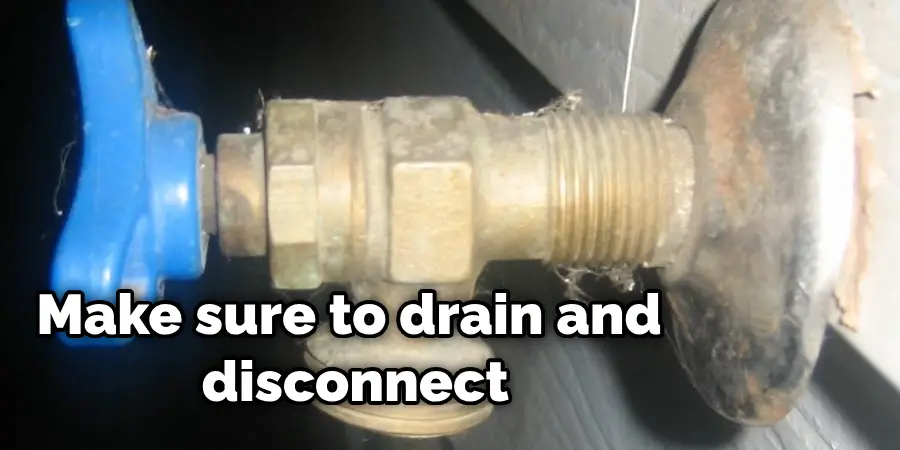
Before winter sets in, make sure to drain and disconnect any hoses attached to your frost-free faucet. Leaving them connected can cause water to back up and potentially freeze.
Use an Insulated Faucet Cover
Consider using an insulated faucet cover for extra protection during harsh winter weather. These covers can be easily installed and provide an added layer of insulation to keep your faucet from freezing.
Keep Your Faucet Drip During Freezing Temperatures
If you anticipate a cold spell, allowing your faucet to drip can prevent it from freezing. The constant flow of water helps prevent any potential ice buildup within the faucet.
Be Mindful of Temperature Changes
Sudden drops in temperature can also lead to frozen pipes and burst faucets. Keep an eye on the weather and take precautions as needed.
Call a Professional if You Encounter Issues
If you notice any issues with your frost-free faucet, such as leaks or reduced water flow, it’s best to call a professional plumber for assistance. They can help identify the problem and make any necessary repairs or replacements.
Winterproofing Wisdom: Tips for All Faucets
Insulate Exposed Pipes
In addition to having frost-free faucets, it’s important to insulate any exposed pipes in your home. This will help prevent freezing and potential damage.
Keep Your Home Warm
Make sure your home is properly insulated and heated during the colder months. This can also help prevent freezing pipes and faucets.
Monitor Your Water Bill
If you notice a sudden increase in your water bill, it could be a sign of a leaky or frozen faucet. Monitor your bill closely and address any potential issues promptly.
Prepare for Power Outages
In the event of a power outage during freezing temperatures, it’s important to have a backup plan for keeping your faucets from freezing. This can include using alternative heating sources or draining your pipes until power is restored.
Educate Yourself on Winter Weather Safety
Being informed about winter weather safety can help you better prepare for potential issues with your faucets and pipes. Make sure to know how to shut off your main water supply in case of an emergency.
Common Issues with Frost-Free Faucets and How to Troubleshoot Them
Leaks
If you notice water leaking from your frost-free faucet, it could be a sign of a damaged seal or washer. Replace any worn-out parts to prevent further leaks.
Reduced Water Flow
Mineral buildup or a faulty valve can cause reduced water flow in your frost-free faucet. Clean the faucet and check for any damaged components that may need replacement.
Freezing in Milder Climates
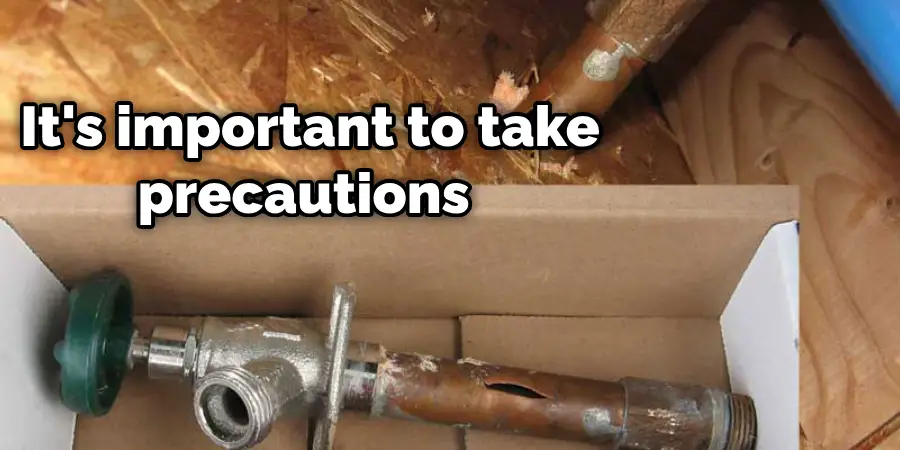
Even if you live in a milder climate, it’s important to take precautions during colder weather. Shut off the water supply and insulate your faucet to prevent any potential freezing.
Thawing Frozen Pipes
If your pipes do freeze, never try to thaw them with an open flame. Instead, use a hair dryer or space heater to thaw the pipes safely.
Broken Handles or Knobs
Over time, handles and knobs on frost-free faucets can become loose or worn down. Replace them as needed to ensure proper functionality.
Rust or Corrosion
Rust and corrosion can affect the performance of your faucet. Use a rust remover or replace any damaged components to prevent further issues.
Improper Installation
If your frost-free faucet is not installed properly, it can lead to leaks and other issues. Consider hiring a professional plumber for installation or repairs.
Aging Parts
Like any other appliance in your home, frost-free faucets have a lifespan and may require replacement parts as they age. Inspect and replace any worn-out components as needed.
How to Install and Repair Frost Free Faucet
Installation
- First, shut off the main water supply to your home.
- Remove the old faucet and clean the installation area.
- Make sure to properly measure and align the new frost-free faucet before installing it.
- Connect the necessary piping and fittings according to the manufacturer’s instructions.
- Use the plumber’s tape or sealant on any connections to prevent leaks.
- Install the faucet and make sure it is securely in place.
- Turn on the main water supply and test for any leaks.
Repair
- Identify the issue with your frost-free faucet, such as a leak or reduced water flow.
- Shut off the water supply to the affected faucet.
- Disassemble the faucet and inspect all components for damage or wear.
- Replace any damaged parts and clean the faucet before reassembling it.
- Turn on the water supply and test the faucet for proper functionality.
- If necessary, call a professional plumber for assistance with more complex repairs.
Conclusion
Proper maintenance and winterization of your frost-free faucet is crucial to ensure its longevity and avoid potential damage. By following these tips and tricks, you can effectively prevent your faucet from freezing or encountering any other issues during the colder months.
And remember to also take care of all your other faucets in preparation for winter! So, follow these recommendations and stay on top of any necessary repairs to keep your faucets functioning properly throughout the year. Happy plumbing and thanks for reading this article about how to tell if you have a frost free faucet.

